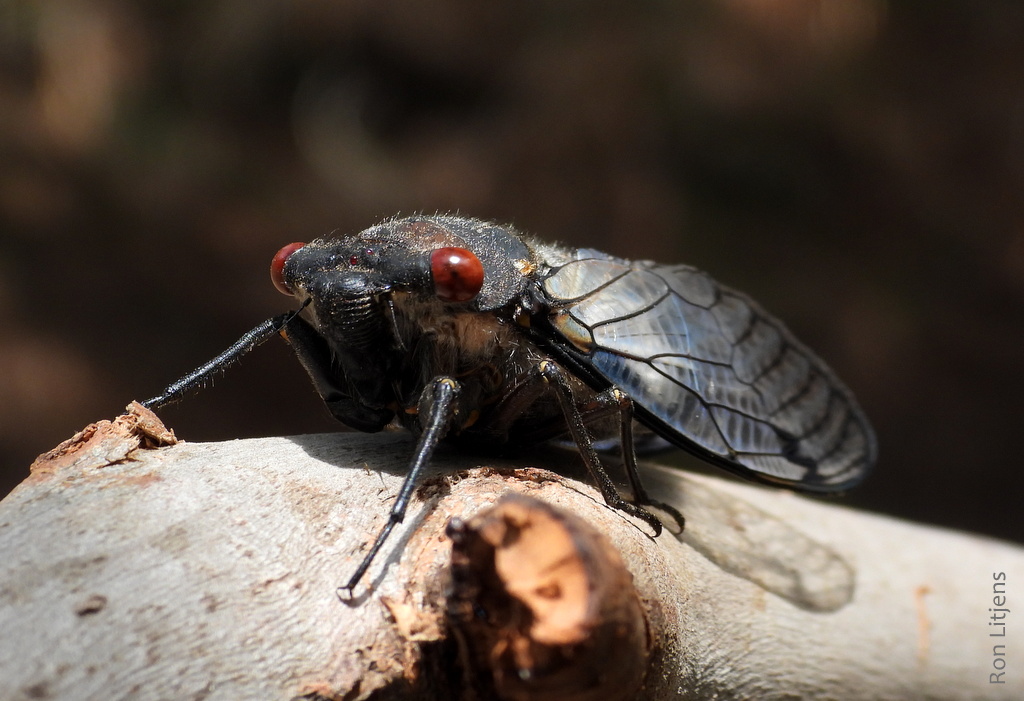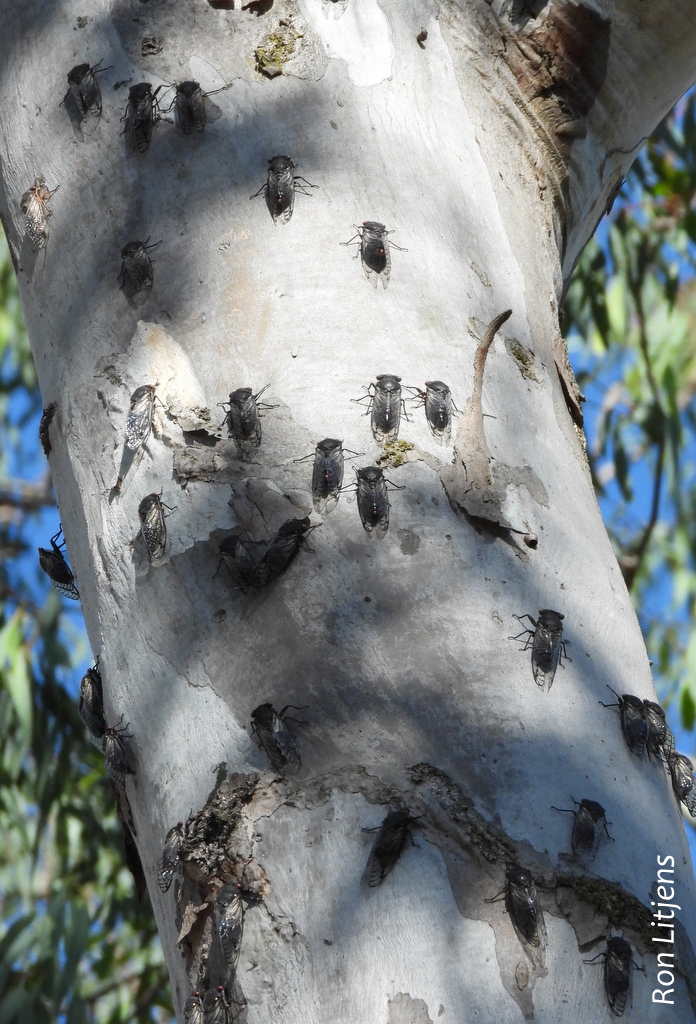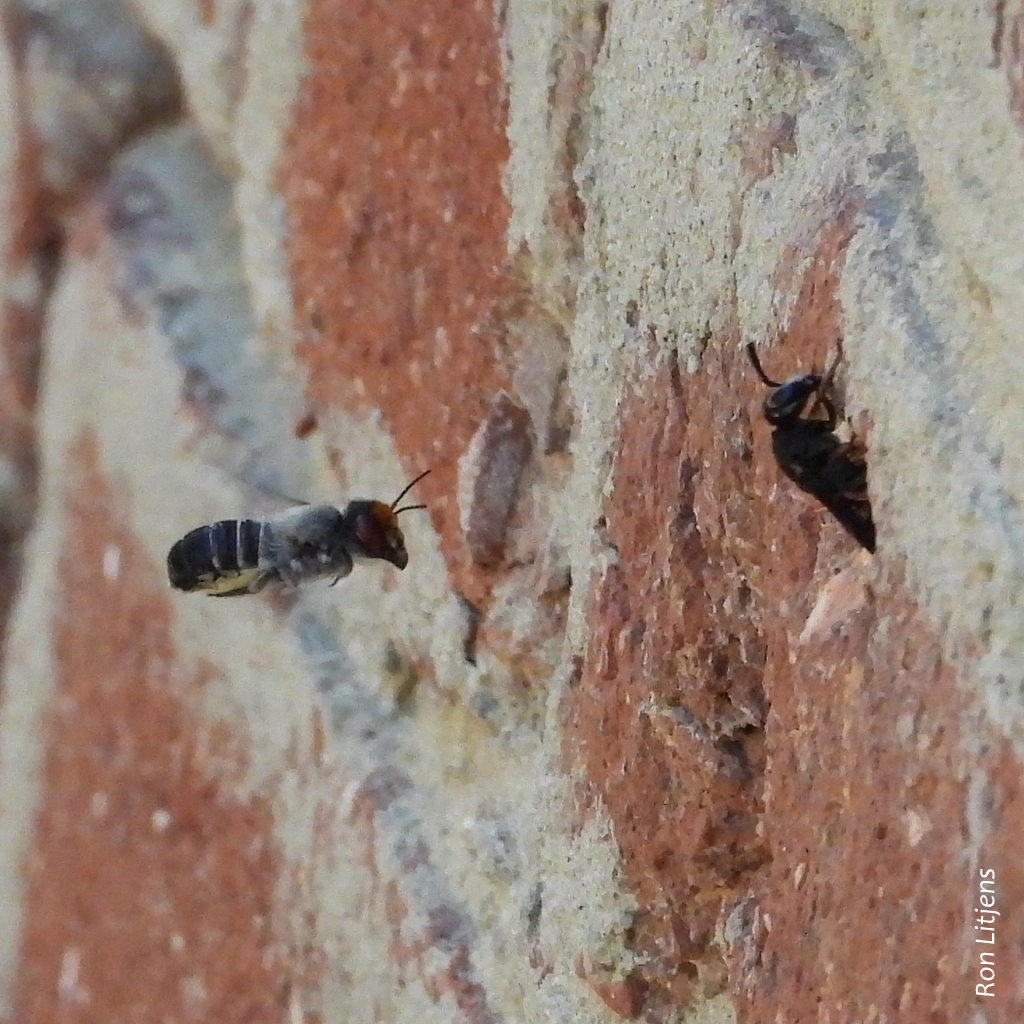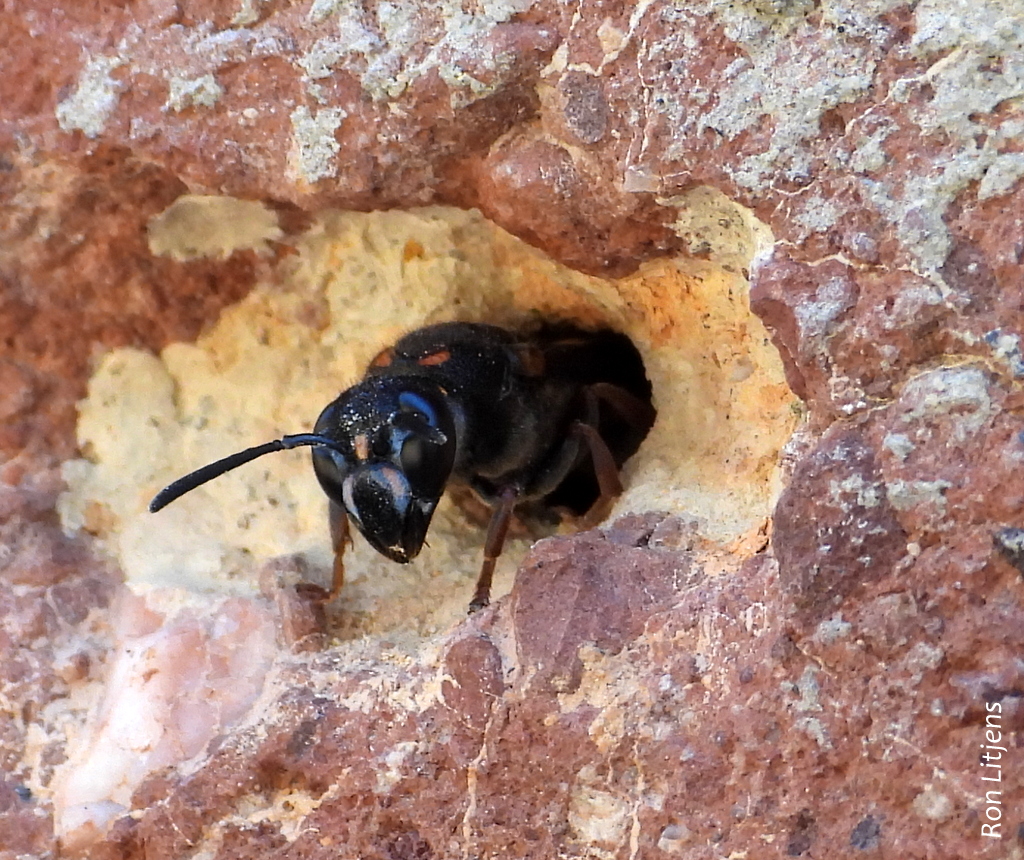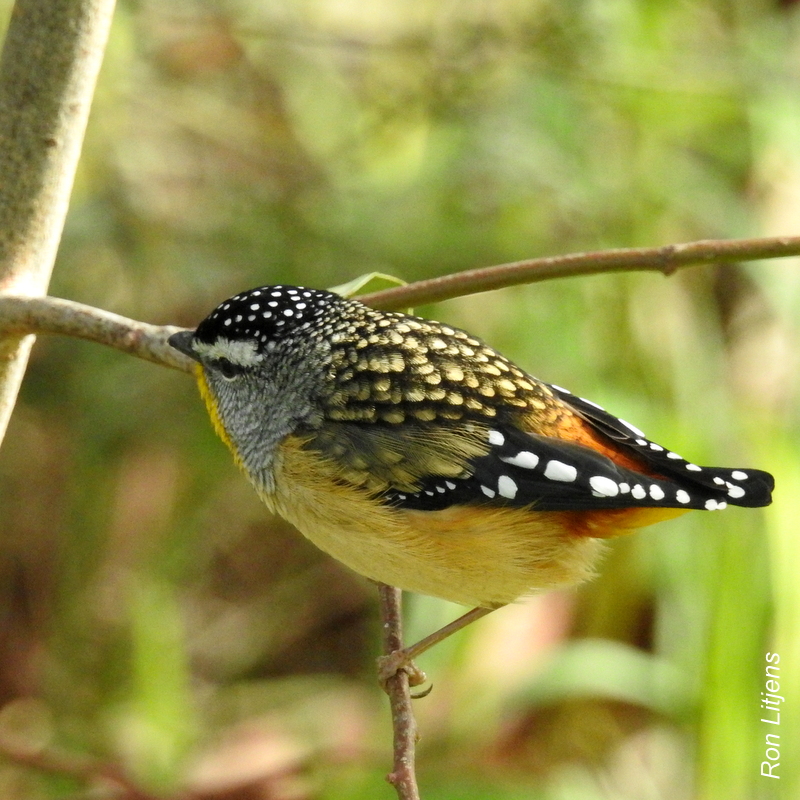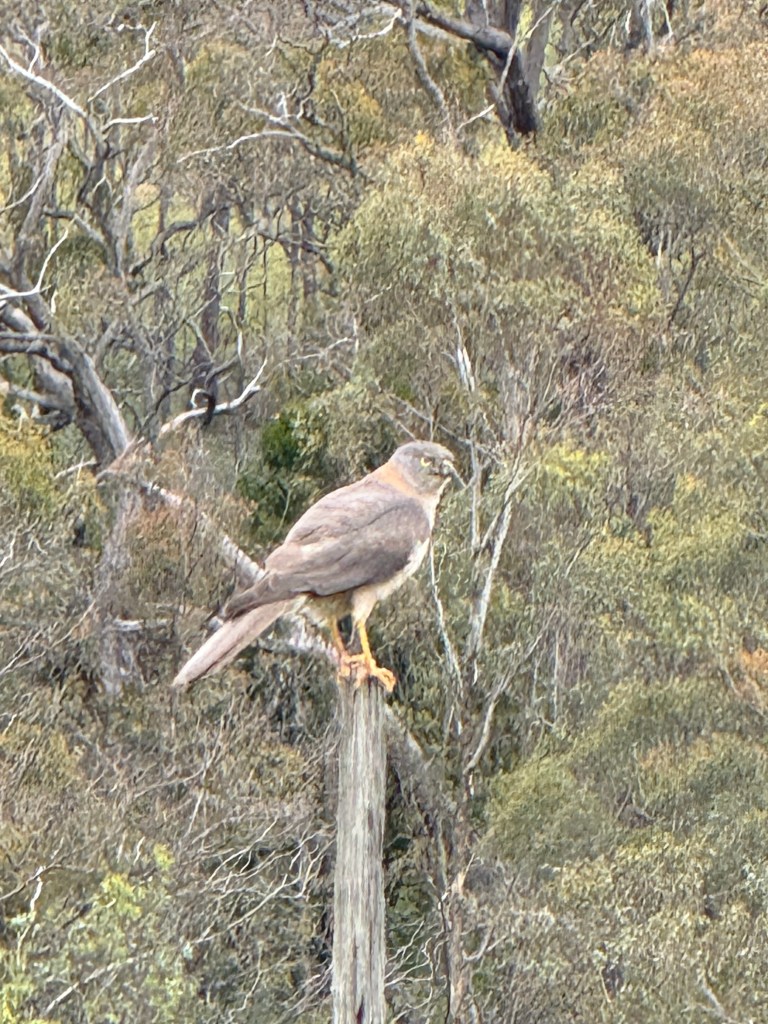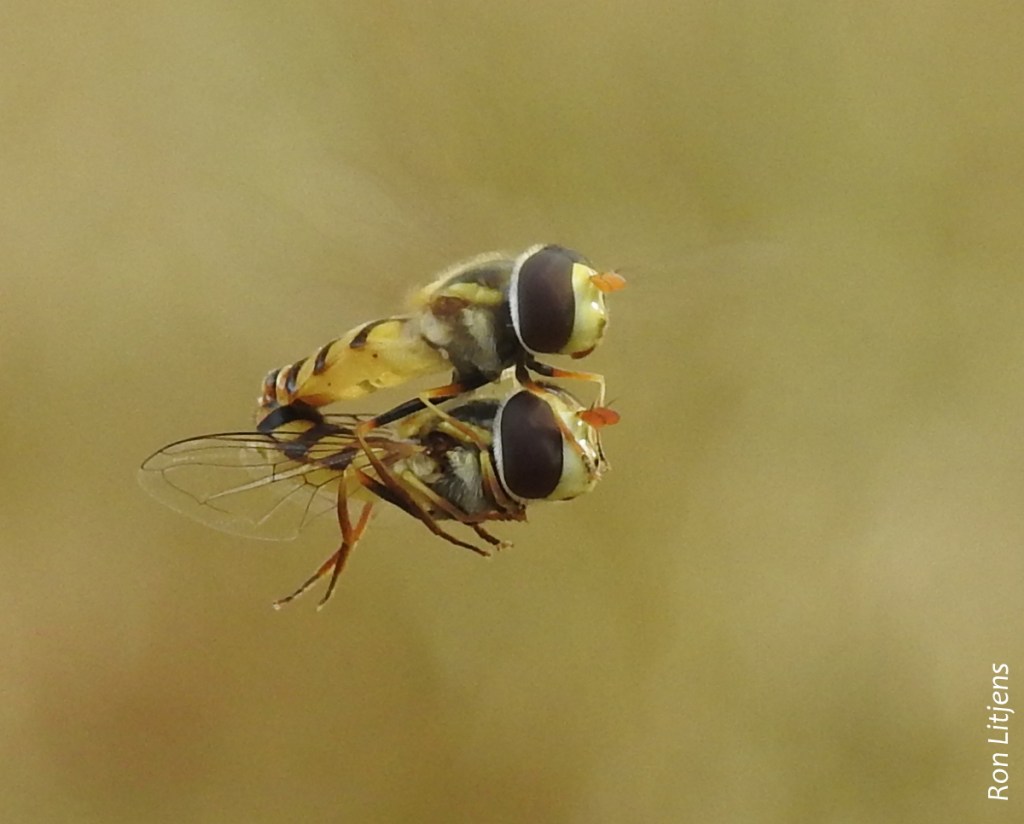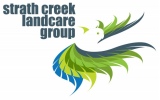It’s rainin’….wee!
Summer is officially here. The sound of cicadas ‘singing’ tells me so. The loudest cicadas around now are the Australian Redeye Cicadas (Psaltoda moerens), pictured left. After spending years underground as a nymph feeding on the sap of tree roots the adult emerges to spend its brief time (a couple of weeks) above ground singing and sucking.
.
The ‘singing’ is a mating call made by the adult male cicada by flexing its abdomen. When large numbers of males congregate the noise can be quite deafening particularly if the sounds starts beating. If you are in such an area simply look up. The cicadas will be attached to the side of smooth barked eucalypts, pictured right.
Adult cicadas feed on the sap of trees. From the sap they extract the proteins and other elements needed to grow and then eliminate the residual as waste. If there are large number of cicadas in an area the ejected waste can feels like rain if you are walking or riding beneath where they are feeding.
And they apparently taste good too. Redeyes are a food many of our large honeyeaters like the Blue-faced Honeyeater pictured below.
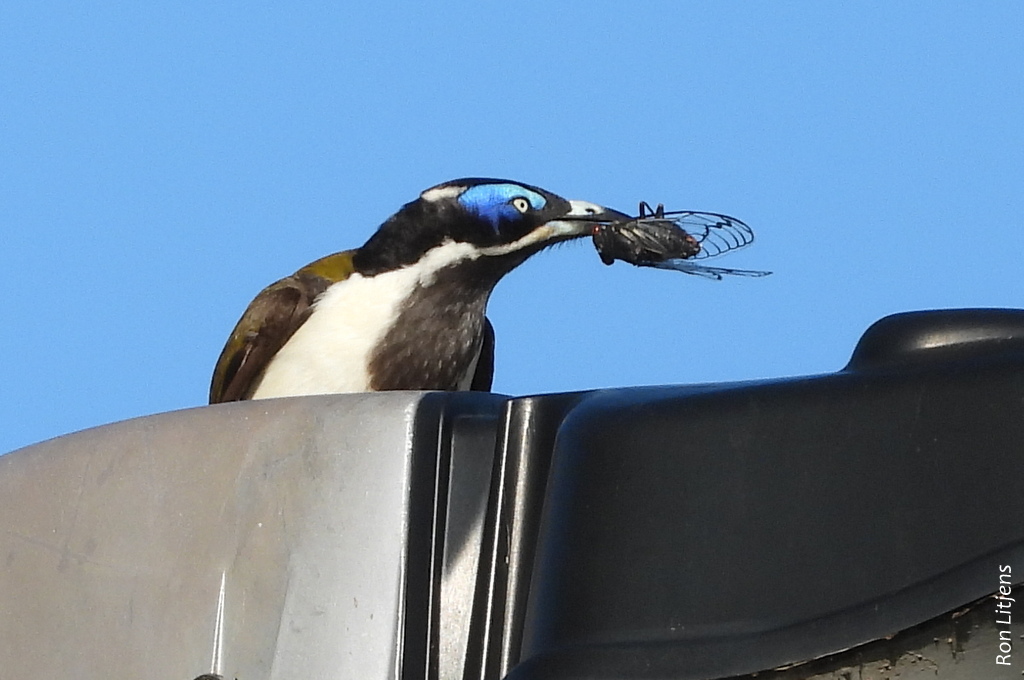
There will be tears
The Blue-banded Bees (Amegilla sp.) are back for the season and so are the parasitoid bees and wasps that try to lay their eggs in the BBB nests. These battles have been well documented over the years (click HERE). The number of parasitoid species are many.
But this year something different was observed. Not the life and death battle of the BBB versus all-comers but instead a real estate battle. The wall of the building provides a 4 metre by 8 metre real estate opportunity. For years the BBB have been digging tunnels in the soft lime mortar between the bricks and in places the bricks are hardly holding their assigned place. But sometimes a little drill hole becomes hot property.
Yesterday a Mud-nesting Wasp (Paralastor sp?) was observed guarding the entrance of an old drill hole when a Leaf-cutter Bee (Megachile sp.) obviously took exception to it being there (pictured above). What ensued was a tussle in which the bee dragged the wasp out of the hole and entered the nest itself (pictured below). The unperturbed the wasp went back to nest guarding duty with the bee inside. The altercation lasted about two hours with the bee and the wasp in turn harassing each other out of this prime real estate.
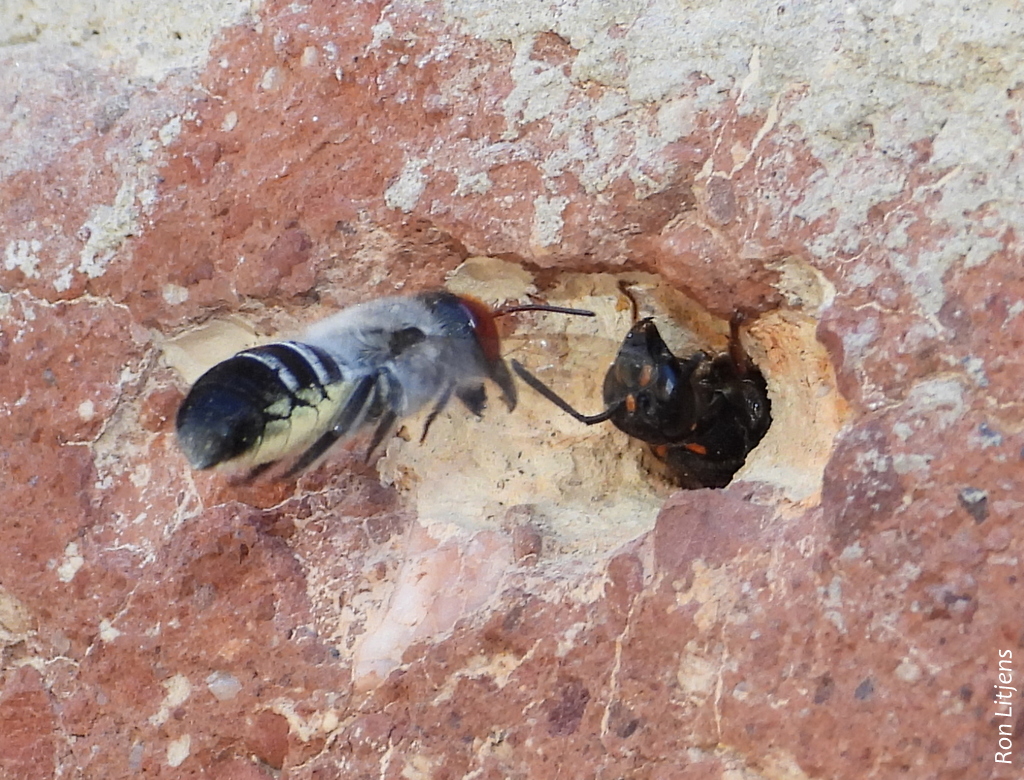
One can only assume that the Leaf-cutter Bee had started to line the nest with leaf pieces when the wasp turned up to assume ownership.
At the end of the day there can only be one winner and as the sun set the wasp was again guarding the nest entrance. But for how long…
Well spotted
One of the prettiest birds around is the Spotted Pardalote (Pardalotus punctatus), pictured left. Though not endangered it is uncommon to see them up close. Pardalotes feed on lerp, the honeydew/sugar houses made by the nymphs of the psyllid insect, click HERE for more information. Lerp are found on new eucalypt leaves and so pardalotes spend a lot of time in the upper branches of gum trees.
Interestingly they build their nests in chambers at the end of tunnels that they excavate in the ground. The chambers are lined with shredded bark. In nature the tunnels can be found in riverbanks or shaded slopes but pardalotes have also been seen digging in piles of sand on building sites. A simple nesting box can be made with an enclosed wooden box to which is attached a piece of black poly pipe to simulate a tunnel entrance. But any cosy nook is fair game.
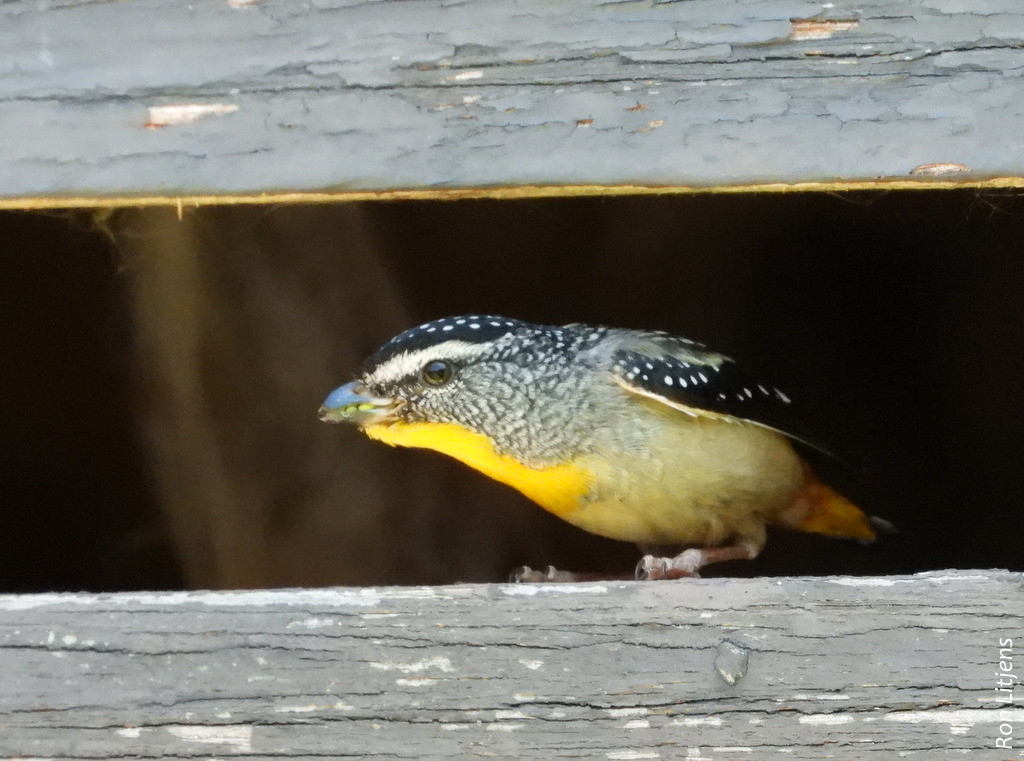
The pardalote pictured above with its beak full of seed constructed a nest in the sub-floor insulation under a nearby house. That was well spotted.
Hypercarnivorous
Hypercarnivorous is a term to describe animals whose diet is over 70% meat and our Australian raptors or Birds of Prey fall into this category. Seeing a raptor up close is a rarity. The keen eyesight that makes them so effective at spotting prey at a distance also serves them well for detecting the approach of humans and thus avoiding them. So their sighting at close quarters is special.
One of the more common species in our district is the Brown Goshawk (Tachyspiza fasciata). It mainly preys on medium-sized birds and small mammals which is does by sitting still and then swooping when the prey gets close. This does not make them welcome neighbours so if you want to find where a Brown Goshawk is roosting just listen out for the commotion that other birds are making to scare it off.
Eric and Sue a top Murchison’s Gap have recently spotted a Brown Goshawk perched on a pole on their property, pictured above.

Coincidentally, closer to home a Brown Goshawk is nesting in a tree in the wetlands, pictured above. Knowing where the nest is obviously makes them easier to find. For the past few weeks the bird has been calling for a mate and last week it got a reply. Can’t wait to see what happens. The nest sits in a large River Red Gum and it is actively defended if one approaches.
Great for photography as long as you don’t abuse the privilege.
Wow. Pollinating and pest control
I’m guessing but I think that after the European Honeybee (Apis mellifera) the most prolific pollinator of the flowers in my garden is the Common Hoverfly (Melangyna viridiceps), pictured below.
As the name suggests hoverflies are flies i.e. they have two wings, and their flight pattern is characterised by hovering. Adults hover in front of flowers to locate the nectar and pollen on which they feed. Female hoverflies will also hover when scoping out a site to lay her eggs whilst the males will hover when looking for a female. Although they do not actively collect pollen the number of hoverflies and the sheer number of flowers that they visit make them great pollinators.

Common Hoverflies are black and yellow in colour and look a lot like bees. This is called Batesian mimicry whereby a harmless creature has evolved to look like a dangerous one to ward off its predator.
The hoverfly lays its eggs on the leaves and stems of plants. When hatched the young maggots actively hunt and eat aphids in your garden. So hoverflies are beneficial in your garden on two fronts.
P.S. It’s not just when they are looking for food that they hover (pictured right).
Honeyeater’s Yalta
One of the most famous photos from World War II is called ‘The Big Three’. It is a picture of Churchill, Roosevelt and Stalin at a conference held in Yalta, Crimea just before the end of the war.
The photo below (entitled ‘The Big Two out of Five’) is of an equivalent meeting but for honeyeaters. The meeting was held on a street lamp in Yea, Victoria. It features a Blue-faced Honeyeater (Entomyzon cyanotis) on the left and a Red Wattlebird (Anthochaera carunculata) on the right. The latter is the second largest of the Australian honeyeaters and the BFH sits in the top five in terms of size. The largest Australia honeyeater, the Yellow Wattlebird (Anthochaera paradoxa) is endemic to Tasmania and could not make the flight across Bass Strait for the conference.

After the conference the Blue-faced Honeyeater was seen having a light meal of a cicada.
Which came first…
Flowering plants first occurred in the fossil record about 100 million years ago, at the same time that bees appeared. Theory says that the two co-evolved i.e. bees responding to changes in the flowers and vice versa. Today flowers come in all different shapes ranging from flat daisy-like flowers to tubular-like flowers of heath and correa. It is not surprising therefore that the insects that visit them have different adaptions to access the nectar and pollen.
One of the physical characteristics that distinguish bees from each other for example is the length of their tongues. Long-tongued bees have mouth parts designed for sipping, like through a straw. These bees are good at extracting nectar from deep throated flowers such as lavender and salvia. The Blue-banded Bee (Amegilla sp.), pictured above with its tongue protruding is a long-tongued Australian native bee. Short-tongued bees have mouth parts adapted more for lapping from flowers such as eucalypts that have a shallow nectar bowl.
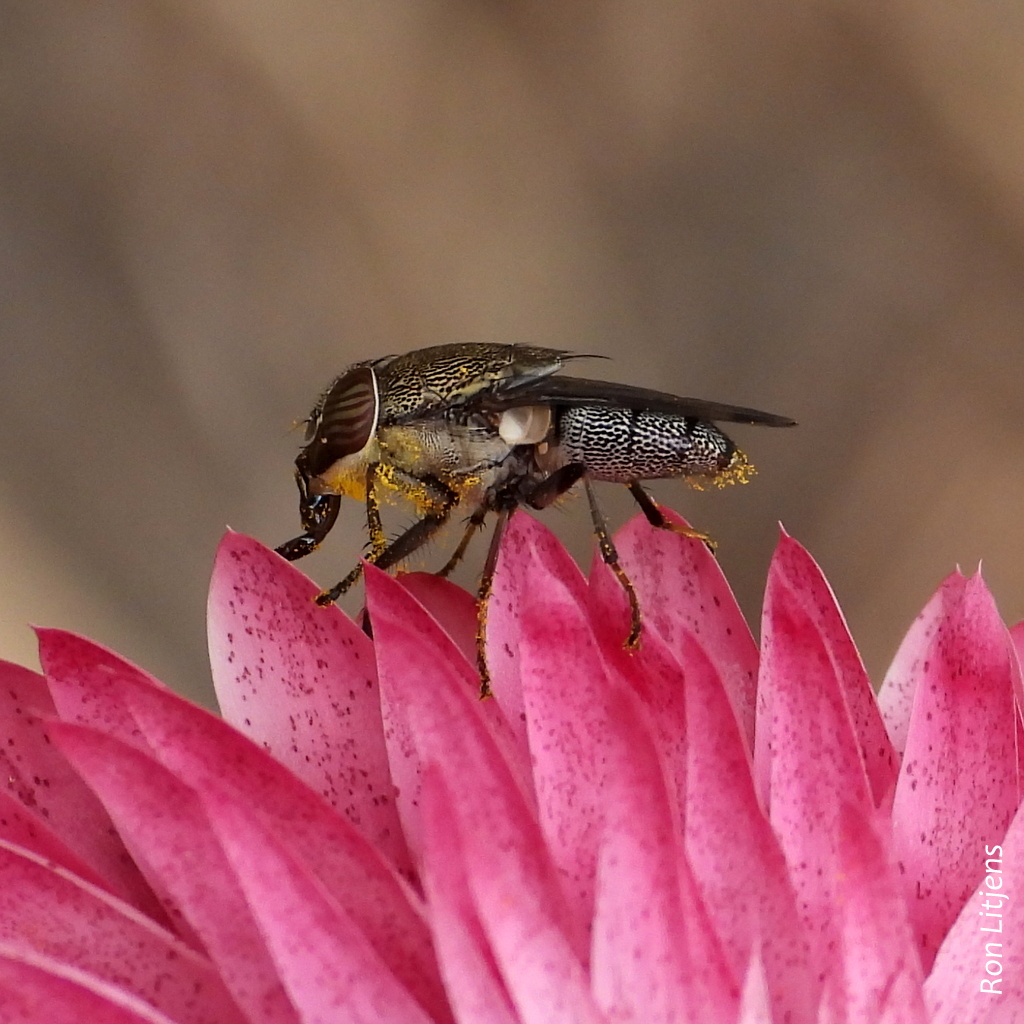
Like bees, some flies are also good pollinators of plants and consume nectar from a range of flowers. They also have mouth parts adapted for different shaped flowers. Under the category of blowflies is a genus of fly called Stomorhina (from the Greek stoma meaning mouth and rhino meaning nose). They are commonly called Snout Flies or Nose Flies (pictured above) because of their long probosces.
These flies (pictured above) are often found feeding on the nectar of flowers and are effective pollinators. Due to the length of their probosces, they can access the pollen in tubular flowers that normal flies cannot -probably an evolutionary tactic as well.
It raises the age-old evolutionary question – Which came first – the flowering plant or the pollinator?
The war is over.
Last year our local Landcare group offered its members nesting boxes to instal on their properties. One of the boxes I’d received was a ‘Rosella Box’ that I installed 7 metres up on the east side of the building. Within six months a pair of Crimson Rosellas (Platycercus elegans) had moved in and successfully raised a brood of chicks (pictured left). In early spring this year rosellas were again checking out the nestbox.
But this year things are different. For the first time that I can remember the district has been overrun by Indian Mynas (Acridotheres tristis). These birds were first introduced from India to Victoria in the 1860’s to control insect pests and have since thrived. They are listed as one of the world’s most invasive species.
The nestbox on the wall was hot property. For about five weeks the Crimson Rosellas and the Indian Mynas were at war over it. It didn’t seem like a fair fight – a pair of rosellas against a flock of mynas. And in the end the numbers won out (pictured right).
The internet is filled with suggestions about how to remedy the situation including midnight raids on the nestbox to ‘remove’ an adult myna on successive nights and then removing the eggs. I suspect the word ‘remove’ is a euphemism for something far worse that I don’t wish to contemplate. My excuse for inaction is that the nestbox is too high for me to access unless I reconstruct the scaffolding I used to first instal it.
My myna problem still remains a major one.
Release the hounds, sorry, bugs
T’is the season that avid vegie gardeners look towards with mixed emotions. Spring is the time when much of the vegie garden comes to life but it is also the time that insect pests do their dastardly deeds. Shield bugs such as the Southern Green Shield Bug (Nezara viridula) (click HERE for more info) can do a lot of damage to vegetables such as tomatoes.
However not all shield bugs are bad. Some predate the very pests that we want to get rid of. Pictured below is a hatching of Spined Predatory Sheild Bugs (Oechalia schellenbergii) in my garden. These bugs have sucking mouthparts which they insert into other insects, inject enzymes and then suck out the juices. And the good news is that one of their known prey is the caterpillar of the Cabbage White Butterfly (Pieris rapae).

This shield bug undergoes five moulting stages before becoming an adult. The first instar (pictured above) is the only stage that is not predatory. That’s OK. I am prepared to wait for it to grow up a little before it tackles those caterpillars.
Release the bugs!
